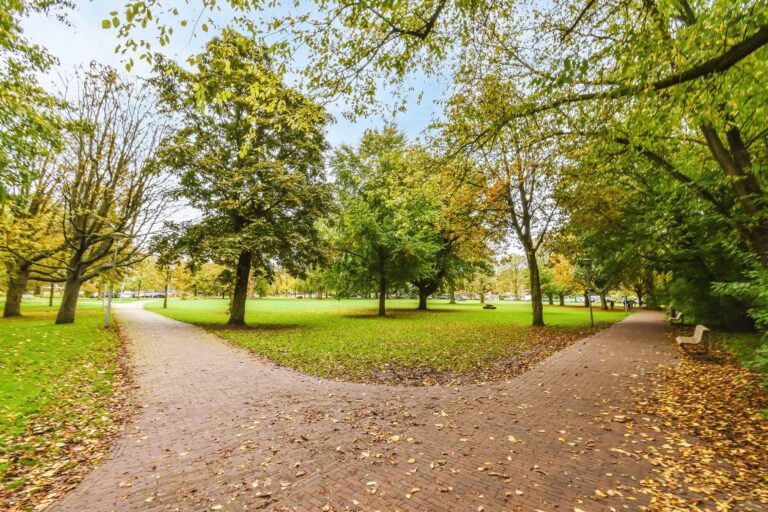
Do you ever feel drained by the spaces you spend your days in? The buzzing of fluorescent lights, bland walls, and windowless rooms can take a toll. You actually don’t need a vacation to recharge. With biophilic design, the practice of bringing nature into our environments, you can create everyday escapes right where you are. Biophilia, our natural need to connect with nature, is the key to turning ordinary spaces into restorative ones.
Why Your Brain Craves an Escape
Think about where you go on vacation: leafy forests, sandy beaches, mountain trails, flower-filled gardens. We gravitate toward these places because they restore us. Science backs it up. Exposure to nature lowers stress, boosts mood, sparks creativity, and helps us focus.
Biophilic design is about giving your brain those benefits every day, not just on vacation. Even hotels like Populous in Denver are making way with biophilic design to create spaces in the city with a sense of calm.
Signs It’s Time to Redesign Your Space
- Feeling tired or unfocused in your home or office?
- Longing for more creativity or calm in your day?
- Wishing you could “get away” without the cost or time of travel?
- Craving environments that make you feel restored, not drained?
These are signals your space may be missing the nature your brain craves.
Biophilic Tips for Everyday Escapes
Biophilic design rests on three pillars: Nature in the Space (plants, water, light), Natural Analogues (textures and patterns inspired by nature), and Nature of the Space (the sense of openness, refuge, or flow). Here’s how to bring them into your daily life:
1. Sunlight is an Instant Mood Booster
Natural light has a powerful effect on mood and energy. Start by opening blinds and curtains as soon as you wake up to reset your circadian rhythm. If your space doesn’t have much natural light, consider rearranging your furniture so you spend more time near a window, or invest in warm-toned, full-spectrum bulbs that mimic daylight. The result feels like sipping coffee on a sunny balcony, even if you’re just at your kitchen table.
2. Plants Are Your Mini Getaway
Adding greenery is one of the simplest and most effective ways to connect with nature indoors. Even a few low-maintenance plants like snake plants, pothos, or succulents can reduce stress and boost focus. Consider clustering several plants together to mimic the lushness of a garden, or place one on your desk where you can see it throughout the day. Studies show that even passive interaction, simply glancing at greenery, lowers blood pressure and improves concentration. Think of each plant as a pocket-sized vacation spot.
3. Vacation Sounds
Close your eyes and picture this: ocean waves rolling in, birds calling in a forest, or rain falling gently on leaves. Sound is a powerful tool to transport your mind. Create playlists of nature sounds, or download apps that play continuous loops of natural environments. Listening to these while you work or relax can lower stress and give your brain the illusion of being outdoors. With the right sounds in the background, your office chair can feel more like a hammock.
4. Fresh Air Flow
The simple act of opening a window changes the quality of a space. Fresh air improves oxygen flow and reduces the stuffiness that can make rooms feel stagnant. If windows aren’t an option, try a small fan to mimic a breeze, or bring in air-purifying plants like peace lilies or spider plants. Even a hint of airflow across your skin can remind your body of outdoor experiences, like relaxing in a beach cabana or hiking a mountain trail.
5. Nature-Inspired Décor
Visual cues matter. Seashells on a shelf, photographs of forests, wooden bowls, or textiles in earthy tones all provide subtle reminders of nature. You don’t need a complete redesign, even small accents create big shifts in mood. Textures are especially powerful: rough wood, woven fibers, or stone surfaces help ground your space in a natural feel. These analogues trick your senses into thinking you’re closer to the outdoors, offering micro-moments of calm throughout the day.
6. Water, Water, Water
Humans are drawn to water. It calms our nervous system and provides a sense of safety and refreshment. Incorporate water features where possible like a tabletop fountain or a small fish tank. The sound of trickling water has been shown to reduce anxiety and improve focus. Just hearing or seeing water nearby creates the same soothing effect you get from sitting beside a stream or fountain on vacation.
Why These Hacks Actually Work
Your brain is wired to respond to natural cues. Sunlight helps regulate circadian rhythms, plants clean the air and improve focus, and water sounds lower heart rate. These aren’t just aesthetic upgrades. They’re backed by psychology and biology. You don’t need a week-long vacation to recharge. With intentional design, your space can become its own retreat.
Everyday Escapes, Big Picture Benefits
Small biophilic hacks can shift your mood in minutes, but their impact scales up. Offices filled with greenery improve productivity. Hospitals with healing gardens see faster patient recovery. Hotels designed with natural light and water features help guests feel restored. Biophilic design changes not just how we decorate, but how we live.
Want to Build a Future in Biophilic Design?
At Unity Environmental University, we believe the future of design is rooted in our connection to nature. Our Bachelor of Science in Applied Psychology and Biophilic Design degree blends science, design, and well-being so you can create spaces that restore people every day. Ready to design your future? Chat with Una to learn more about Unity Environmental University’s BS in Applied Psychology and Biophilic Design or apply today.



